The Bourbon Family Tree: Exploring the Branches of America’s Favorite Spirit

Bourbon isn’t just a drink — it’s a family. Across distilleries, decades, and countless barrels, each bottle carries its own personality, shaped by its grains, its aging environment, and the hands that crafted it. And just like any family, bourbon has branches: distinct styles and mash bills that offer a roadmap to understanding what’s in your glass.
At Aged in Oak, we believe learning the foundations of bourbon isn’t about snobbery — it’s about appreciation. Whether you’re just stepping into the world of whiskey or building a collection one rare bottle at a time, the “bourbon family tree” helps you understand what you love, why you love it, and what bottles to explore next.
Let’s break down the major branches that make America’s native spirit so endlessly fascinating.
The Straight Bourbon Branch: The Classic Core
Straight bourbon is the backbone of the bourbon world.
To earn the title, a bourbon must be aged at least two years in new charred American oak barrels — no shortcuts, no additives, no gimmicks.
Flavor Profiles You’ll Find:
- Caramel and vanilla
- Toasted oak
- Warm baking spices
- Light fruit or floral notes
Most of the bottles that introduce people to bourbon fall into this category — think Buffalo Trace, Four Roses, Wild Turkey, and Elijah Craig. These are the dependable, foundational bourbons that set the tone for the entire family tree.
Wheated Bourbon: The Softer, Sweeter Branch
Swap rye for wheat in the mash bill, and you get one of the most beloved branches of bourbon: wheated bourbon.
Wheat rounds out the profile, softening spice and enhancing sweetness. It’s why brands like Weller, Maker’s Mark, Larceny, and of course Pappy Van Winkle have such cult followings.
Typical Flavor Notes:
- Creamy caramel
- Honeyed sweetness
- Soft baking spice
- Buttery oak
- Gentle fruit
Wheated bourbons are approachable, elegant, and perfect for collectors who enjoy smooth, balanced pours.
High-Rye Bourbon: The Bold, Spicy Branch
On the opposite end of the spectrum sits high-rye bourbon — a style known for its lively spice and punchier profile.
Rye adds structure and intensity, making these bottles favorites for those who crave complexity.
Common Notes:
- Peppery spice
- Clove and cinnamon
- Dark fruit
- Leather and tobacco
- Robust oak
High-rye bourbons include Four Roses Single Barrel, Old Grand-Dad, 1792, and Woodford Reserve. If you like your bourbon with a kick, this is your branch.
Single Barrel Bourbon: The Individualist Branch
Single barrel bourbon celebrates individuality. Each bottle comes from a single barrel — no blending, no averaging, just one distinct expression of the distiller’s craft.
This branch includes some of the most collectible bottles in the bourbon universe: Blanton’s, E.H. Taylor Single Barrel, and private store picks.
Why Collectors Love It:
- Every barrel tastes slightly different
- Higher chance of discovering a standout bottle
- Barrel number and warehouse details add provenance
It’s bourbon at its most personal — one barrel, one story.
Small Batch Bourbon: The Curated Branch
Small batch bourbons land between traditional and single barrel — crafted by blending a limited number of select barrels to create a specific flavor profile.
Think of it as the “chef’s selection” of the bourbon family tree.
Examples:
- Four Roses Small Batch
- Baker’s
- Knob Creek
- 1792 Small Batch
Collectors love this category for its reliability paired with intentional craftsmanship.
Barrel Proof Bourbon: The Wild, Unfiltered Branch
Barrel proof bourbons skip dilution and bottling water entirely — what you’re tasting is exactly what came out of the barrel.
What That Means:
- Higher proofs
- Bigger flavor
- Deeper oak
- Longer finishes
- A more raw and authentic experience
Popular examples include Blanton’s Straight From the Barrel, Stagg Jr., Elijah Craig Barrel Proof, and Maker’s Mark Cask Strength.
For many collectors, this branch represents bourbon in its purest form.
Finished Bourbon: The Experimental Branch
Finished bourbons spend time aging in a secondary cask — often sherry, port, rum, or wine barrels — to add layers of flavor.
This branch is where distillers get creative.
Common Finishes:
- Sherry (rich, fruity)
- Port (sweet, jammy)
- Rum (tropical, caramelized)
- Cabernet (dark, tannic)
Bottles like Angel’s Envy, Bardstown Fusion and Discovery series, and Blue Run showcase how innovative finishing can be.
Collectors lean into this branch for its variety and novelty — no two finished bourbons are the same.
Limited Editions & Allocations: The Unicorn Branch
Then we get to the rare, elusive branch — the bottles that spark midnight lines, heated arguments, and bragging rights.
Who Lives Here?
- Pappy Van Winkle
- Weller Antique “store picks”
- Four Roses Limited Edition Small Batch
- Buffalo Trace Antique Collection
- Blanton’s Gold & Straight From the Barrel
These bottles combine scarcity, craftsmanship, and cultural hype — making them the crown jewels of most bourbon collections.
The Bottom Line: Know the Branches, Find Your Flavor
The world of bourbon is broad, rich, and full of personality. Once you understand the branches of the bourbon family tree — the grains, the aging, the barrel choices, and the styles — choosing bottles becomes less overwhelming and a lot more fun.
Whether you love the softness of wheated bourbon, the spice of high-rye, or the power of barrel-proof, there’s a branch that fits your taste (and your collection).
At Aged in Oak, we’re here to help you explore them all — one bottle, one auction, and one pour at a time.
→ Browse the bourbons in our current auction and discover your next favorite branch.
More Fresh Pours and Perspectives

Inside the Auction: Rare Scotch, Collector Trains & 200+ Bottles Ready for the Taking

Inside the Auction: Rare Scotch, Collector Trains & 200+ Bottles Ready for the Taking

From Distillery to Digital — How Bourbon Collecting Moved Online

From Distillery to Digital — How Bourbon Collecting Moved Online

Blanton’s Bourbon: History, Expressions, and the Hype Behind America’s Most Collectible Bourbon

Blanton’s Bourbon: History, Expressions, and the Hype Behind America’s Most Collectible Bourbon

Inside the Auction: Iconic Bottles, Bourbon Legends & the Thrill of the Bid

Inside the Auction: Iconic Bottles, Bourbon Legends & the Thrill of the Bid
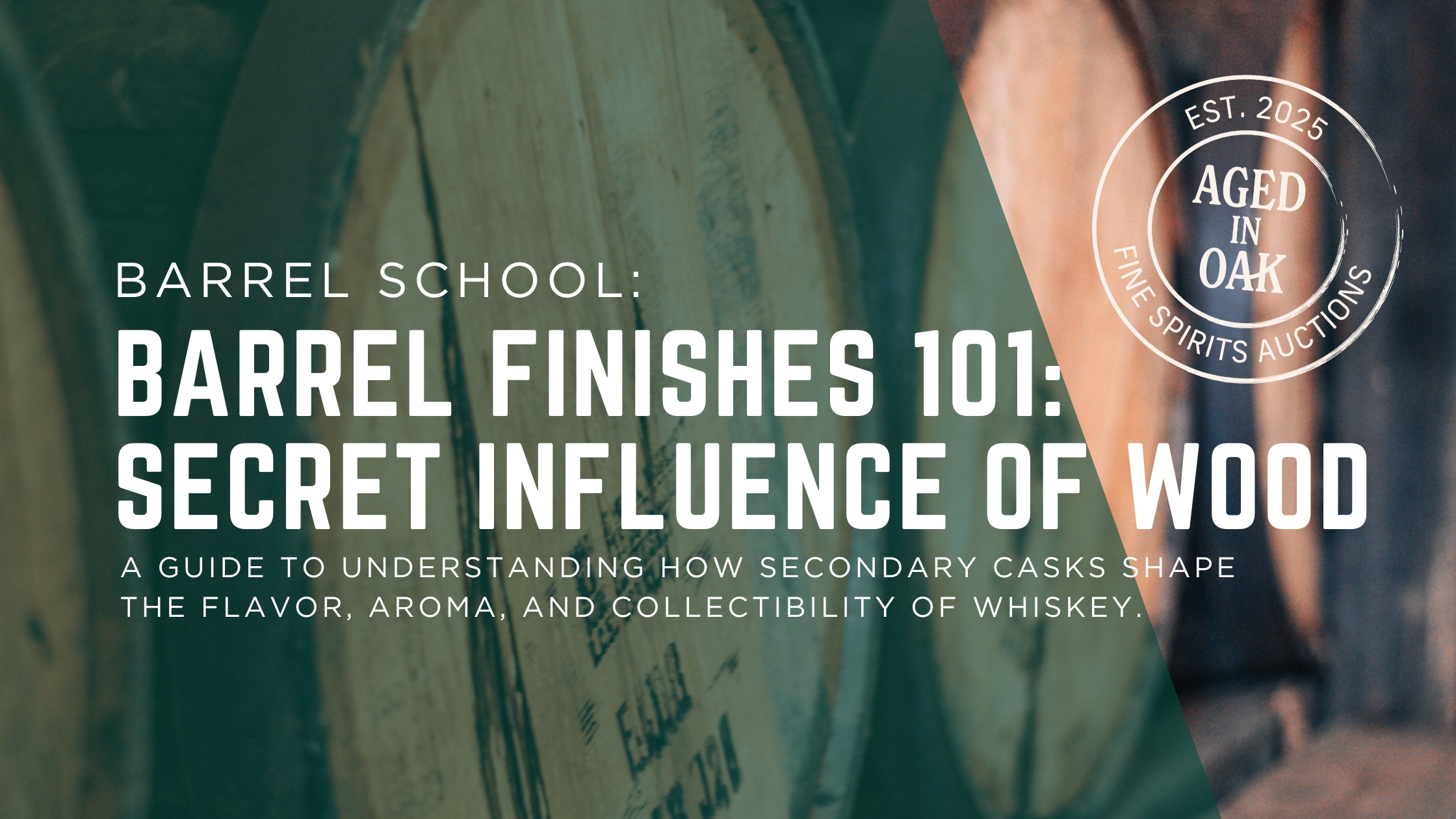
Barrel Finishes 101: The Secret Influence of Wood

Barrel Finishes 101: The Secret Influence of Wood
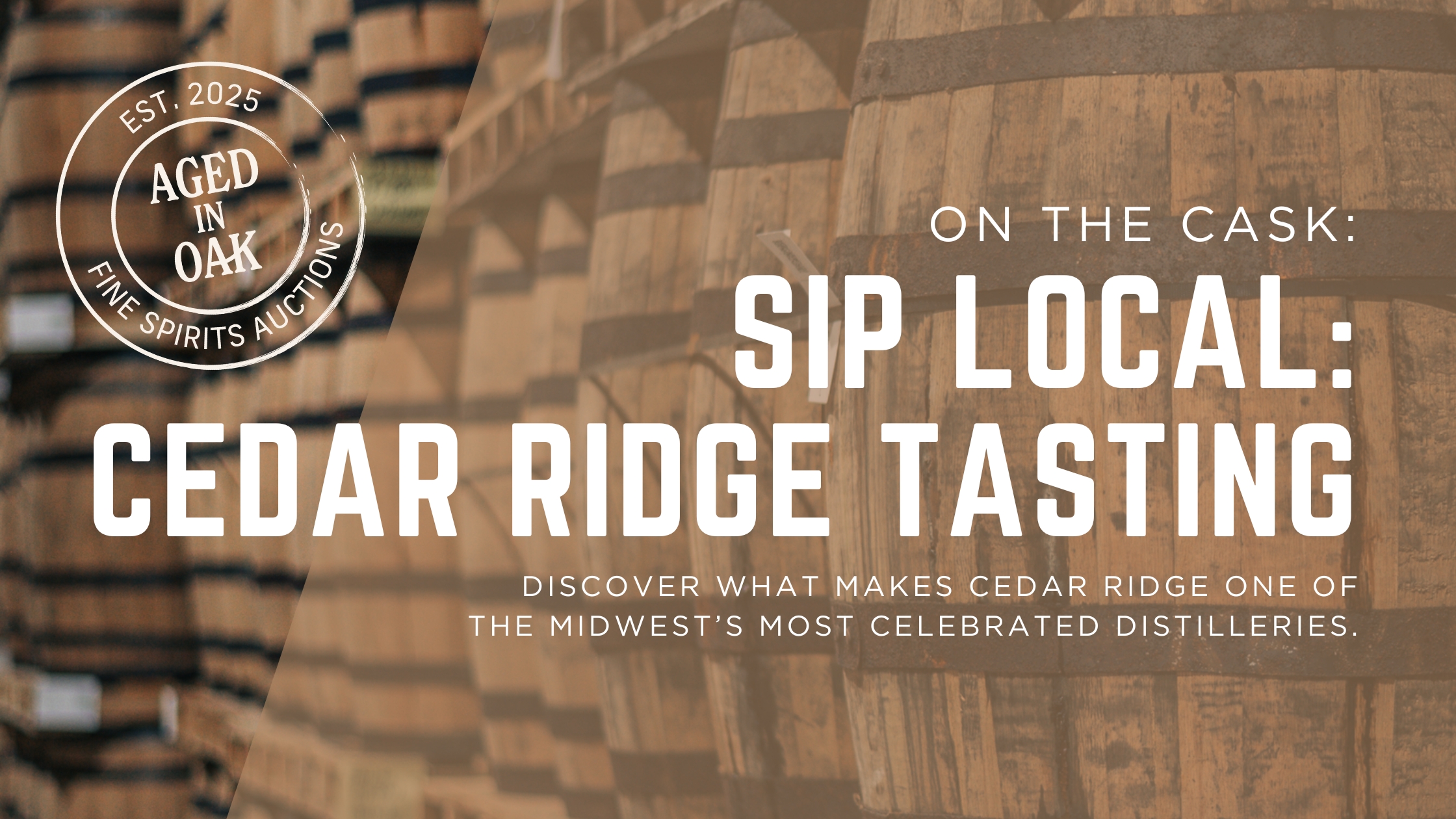
Sip Local: Cedar Ridge Distillery Tasting at Aged in Oak

Sip Local: Cedar Ridge Distillery Tasting at Aged in Oak

Inside the Auction: Powerhouse Picks, Proof, and the Joy of the Bid

Inside the Auction: Powerhouse Picks, Proof, and the Joy of the Bid

The Thrill of No Reserve: Why These Bourbon Auctions Keep Collectors Coming Back

The Thrill of No Reserve: Why These Bourbon Auctions Keep Collectors Coming Back

The Thrill of No Reserve: Why These Bourbon Auctions Keep Collectors Coming Back

The Thrill of No Reserve: Why These Bourbon Auctions Keep Collectors Coming Back

What Bourbon Is Made From: The Art (and Law) Behind America’s Spirit

What Bourbon Is Made From: The Art (and Law) Behind America’s Spirit

The Ghosts of the Rickhouse: Haunted Legends of Bourbon Country

The Ghosts of the Rickhouse: Haunted Legends of Bourbon Country

Single Barrel vs. Small Batch: What’s the Difference (and Does It Matter?)

Single Barrel vs. Small Batch: What’s the Difference (and Does It Matter?)

Bottles with a Past: The Spooky Side of Bourbon History

Bottles with a Past: The Spooky Side of Bourbon History
.jpg)
Inside the Auction: Hidden Gems, Signed Bottles & Kentucky’s Finest
.jpg)
Inside the Auction: Hidden Gems, Signed Bottles & Kentucky’s Finest
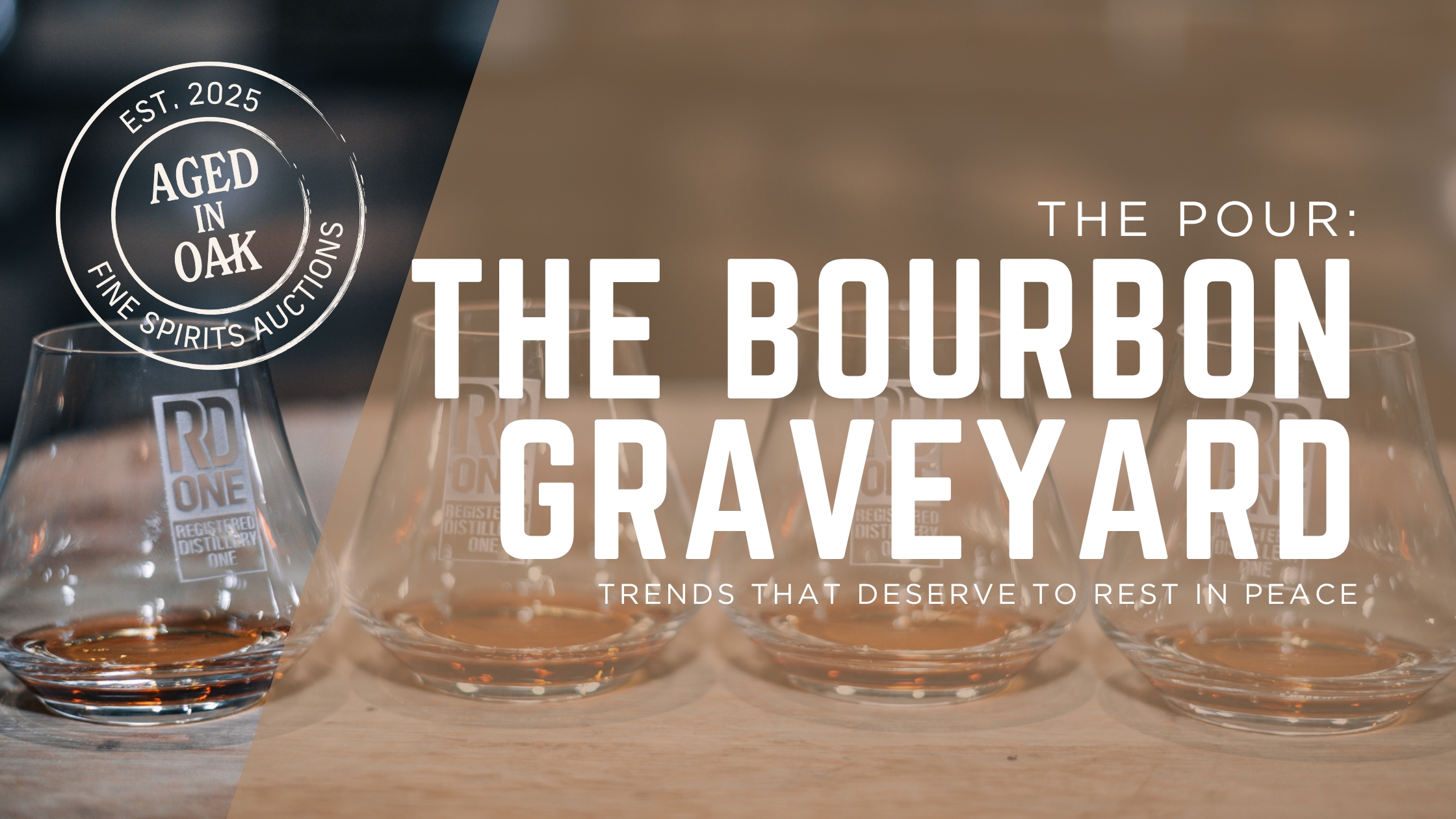
The Bourbon Graveyard: Trends That Deserve to Rest in Peace

The Bourbon Graveyard: Trends That Deserve to Rest in Peace

How to Read a Bourbon Label Like a Pro: Decoding the secrets behind age, proof, and distillery details

How to Read a Bourbon Label Like a Pro: Decoding the secrets behind age, proof, and distillery details

Bringing Bourbon’s Heritage Home: How Aged in Oak captures the soul of Bardstown in the heart of Vernon Hills.

Bringing Bourbon’s Heritage Home: How Aged in Oak captures the soul of Bardstown in the heart of Vernon Hills.
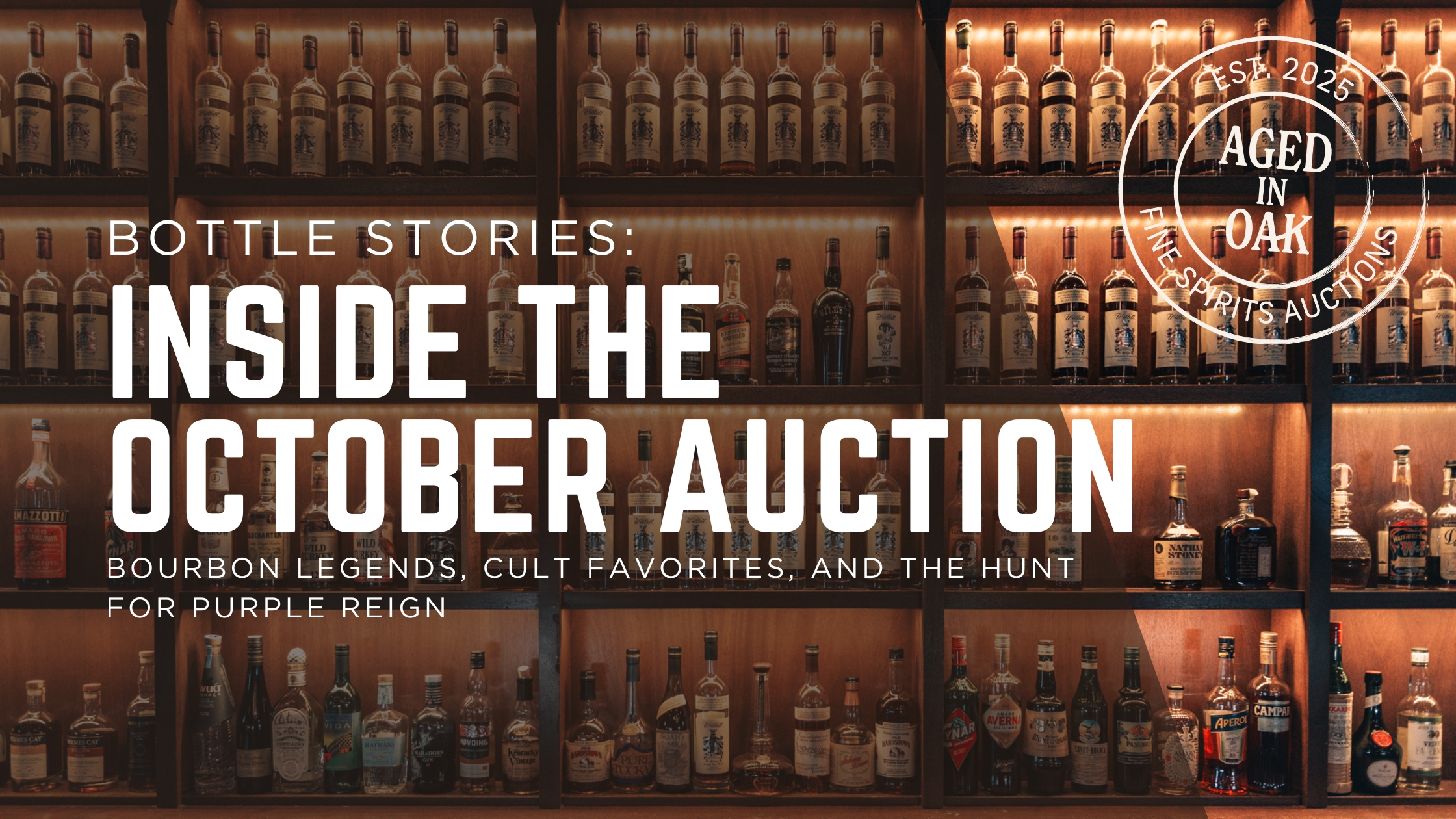
Inside the Auction: Bourbon Legends, Cult Favorites, and the Hunt for Purple Reign

Inside the Auction: Bourbon Legends, Cult Favorites, and the Hunt for Purple Reign
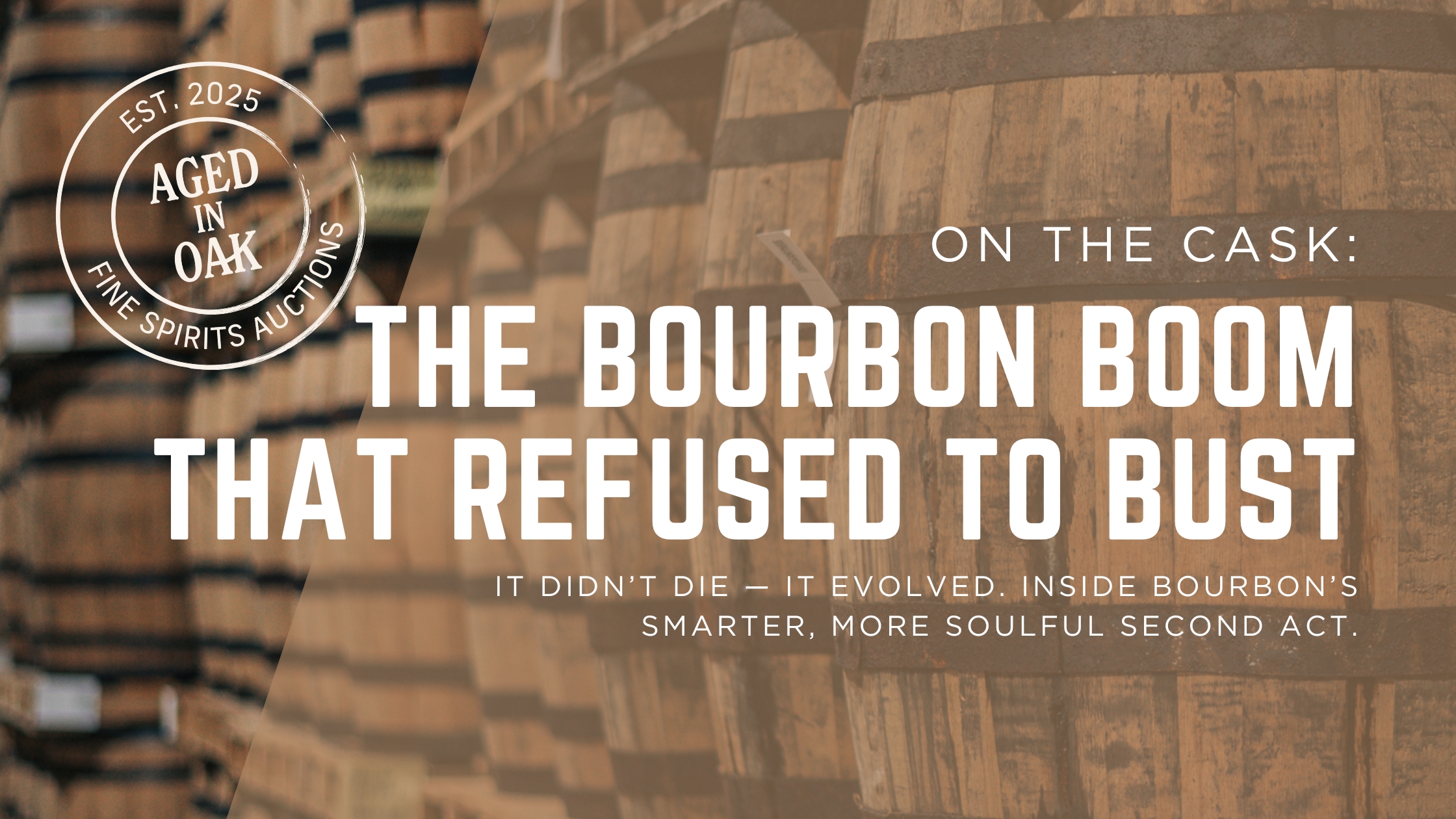
The Bourbon Boom That Refused to Bust

The Bourbon Boom That Refused to Bust
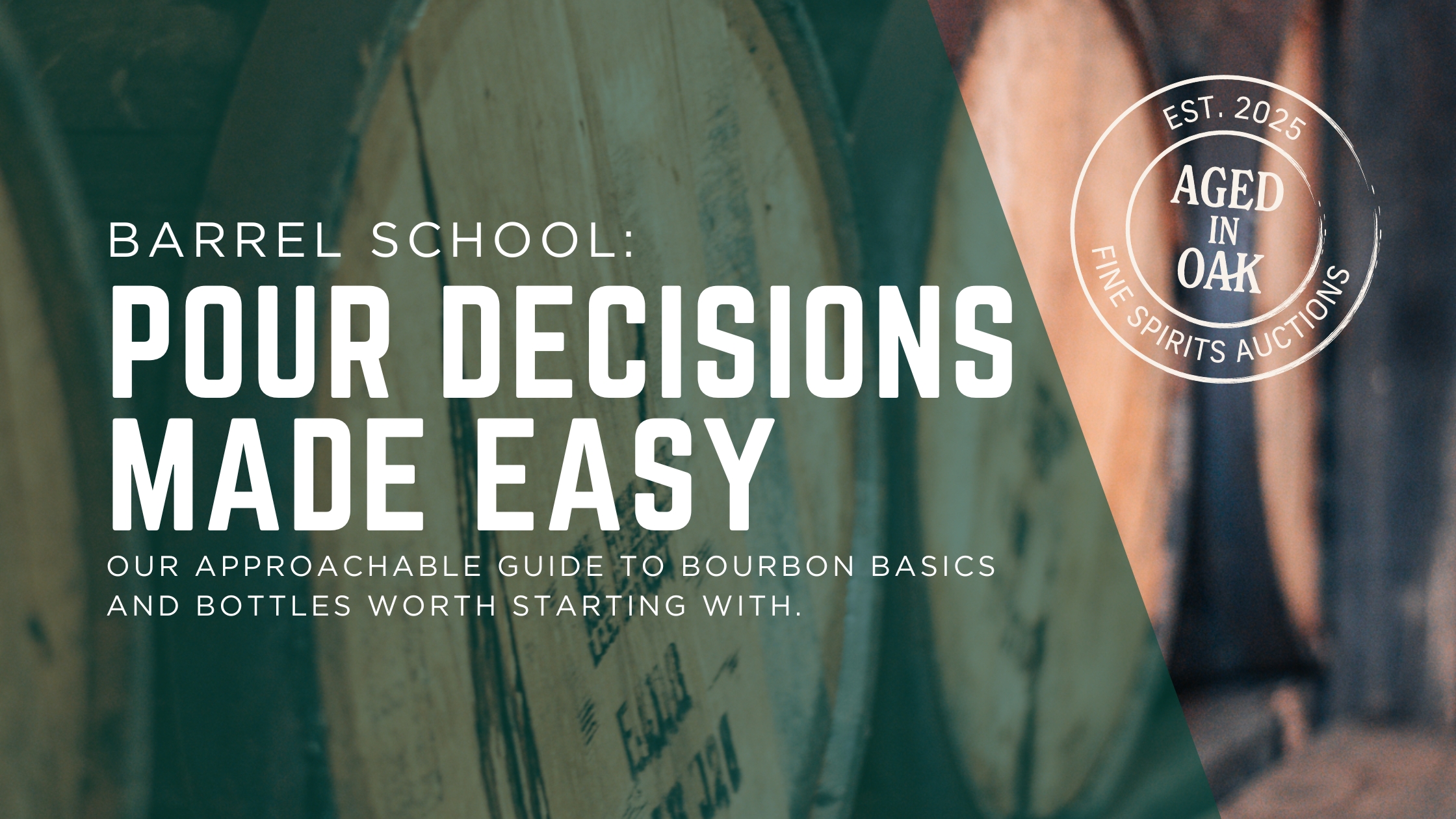
Pour Decisions Made Easy: Our Approachable Guide to Bourbon Basics and Bottles Worth Starting With

Pour Decisions Made Easy: Our Approachable Guide to Bourbon Basics and Bottles Worth Starting With

Bourbon, Community, and a Little Rebellion: Why tastings are the hottest social scene of 2025

Bourbon, Community, and a Little Rebellion: Why tastings are the hottest social scene of 2025

The Bottle That Broke the Rules: The Story of Blanton’s Original Single Barrel

The Bottle That Broke the Rules: The Story of Blanton’s Original Single Barrel
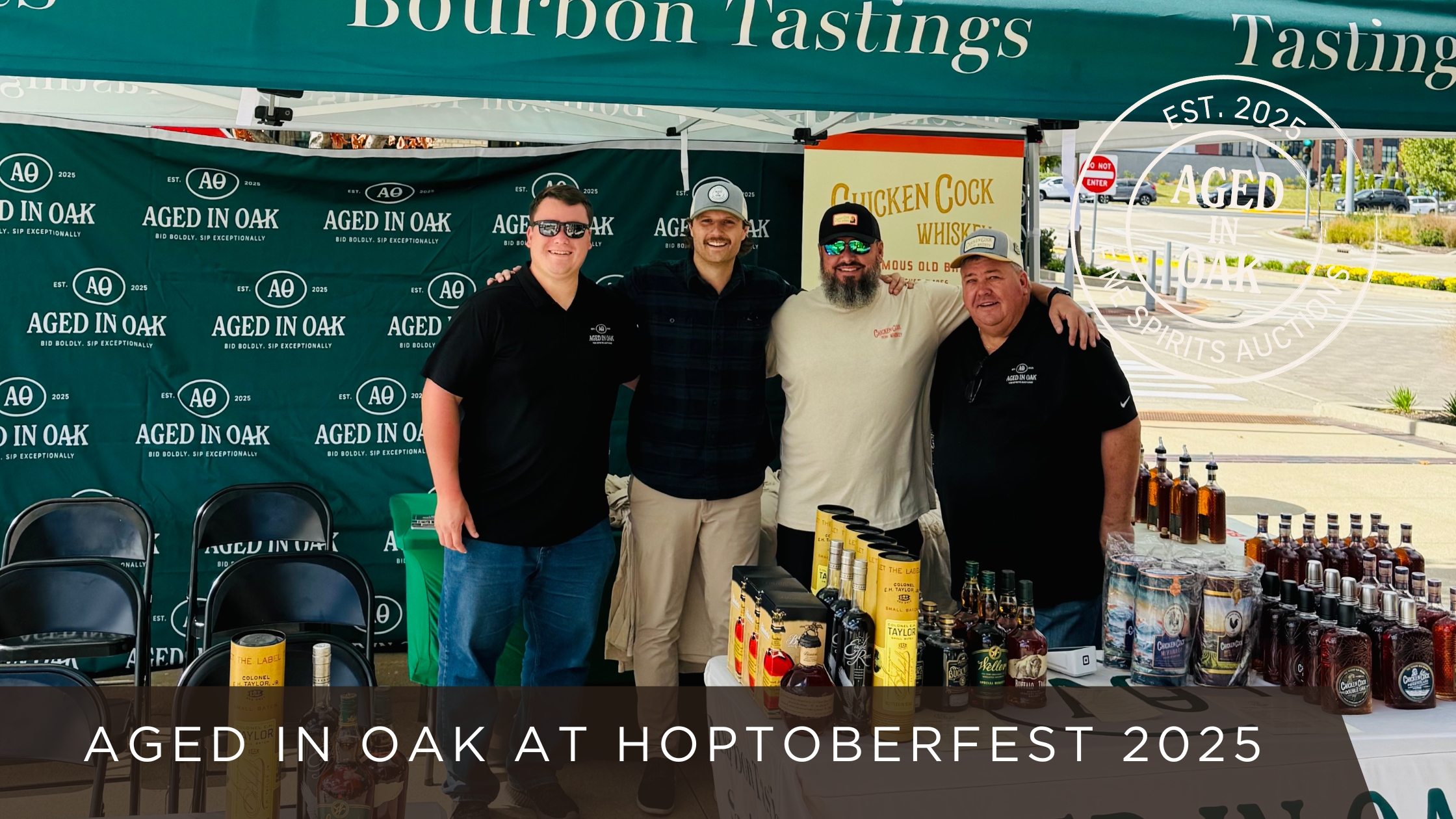
A Toast to Hoptoberfest: New Faces, Great Bourbon, and Unforgettable Conversations

A Toast to Hoptoberfest: New Faces, Great Bourbon, and Unforgettable Conversations
.jpg)
Bourbon Through the Ages: The Stories Behind America’s Spirit
.jpg)
Bourbon Through the Ages: The Stories Behind America’s Spirit
.jpg)
Rare Bourbon, Signature Cocktails, and Community -- Find It All At Aged in Oak in Vernon Hills
.jpg)
Rare Bourbon, Signature Cocktails, and Community -- Find It All At Aged in Oak in Vernon Hills

Fall Into Flavor: Bourbon Recipes That Hit Harder Than Pumpkin Spice

Fall Into Flavor: Bourbon Recipes That Hit Harder Than Pumpkin Spice

What Your Go-To Pour Says About You: A Bourbon Personality Test You Didn’t Know You Needed

What Your Go-To Pour Says About You: A Bourbon Personality Test You Didn’t Know You Needed

From Still to Auction Block: How Bourbon Matures (And Why Oak Is Everything)

From Still to Auction Block: How Bourbon Matures (And Why Oak Is Everything)

Weller Bourbon: The People’s Pappy and the Wheated Whiskey That Broke the Market

Weller Bourbon: The People’s Pappy and the Wheated Whiskey That Broke the Market
.jpg)
Crown Jewel Bourbon Bottles: The Ultimate Collectible Whiskey for Serious Collectors
.jpg)
Crown Jewel Bourbon Bottles: The Ultimate Collectible Whiskey for Serious Collectors

How Global Market Trends Are Shaping the Whiskey Collectible Space in 2025

How Global Market Trends Are Shaping the Whiskey Collectible Space in 2025
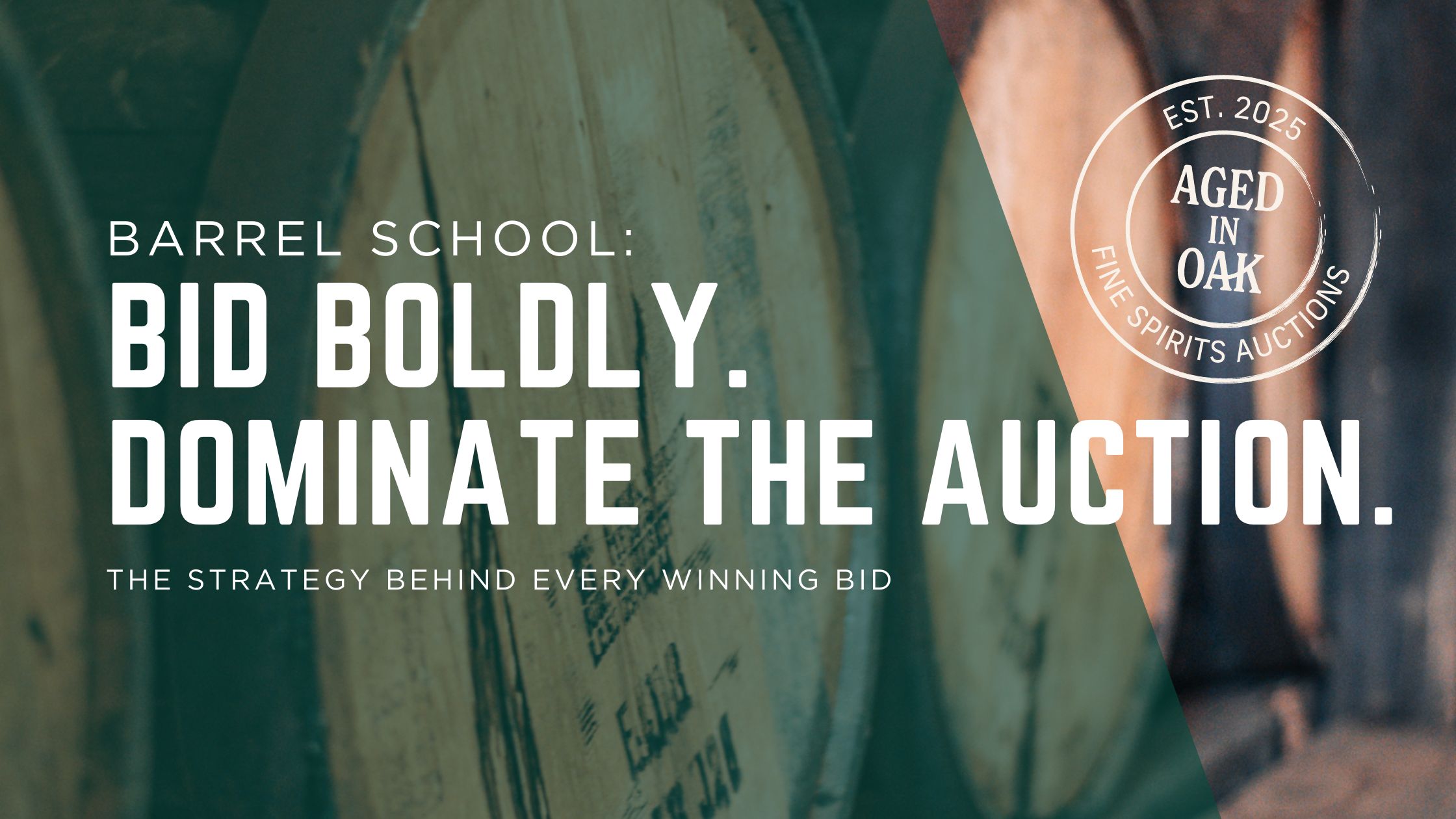
Bid Boldly. Sip Exceptionally. Dominate the Auction.

Bid Boldly. Sip Exceptionally. Dominate the Auction.
.jpg)
We’re in the Daily Herald: Building a Bourbon Community in Vernon Hills
.jpg)
We’re in the Daily Herald: Building a Bourbon Community in Vernon Hills
.jpg)
From Shelf to Sip: The People Who Keep Bourbon Alive
.jpg)
From Shelf to Sip: The People Who Keep Bourbon Alive
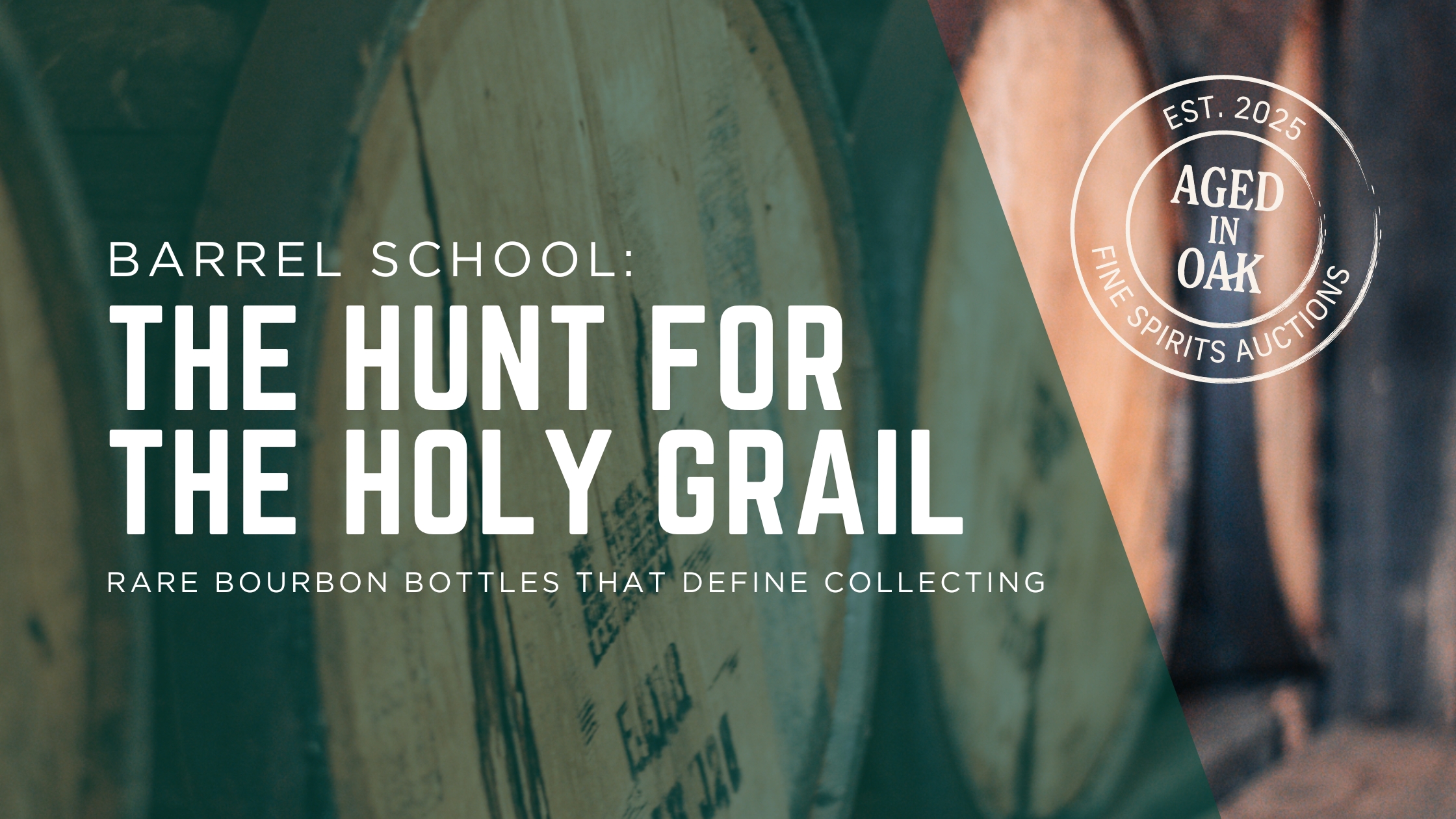
The Hunt for the Holy Grail: Rare Bourbon Bottles That Define Collecting

The Hunt for the Holy Grail: Rare Bourbon Bottles That Define Collecting

Cash Out Without Selling Out: How to Consign Bourbon with Aged in Oak

Cash Out Without Selling Out: How to Consign Bourbon with Aged in Oak
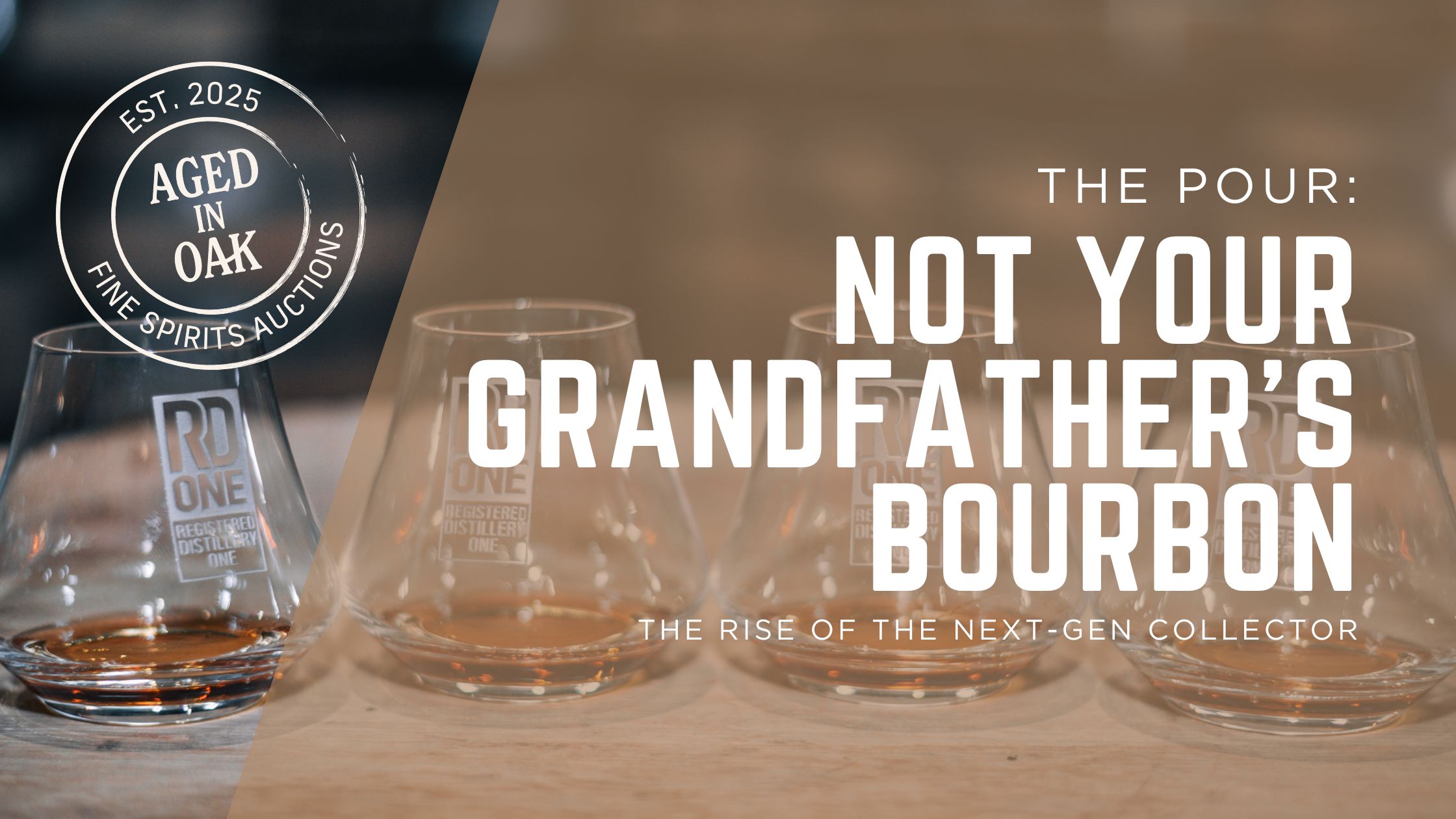
Not Your Grandfather’s Bourbon: The Rise of the Next-Gen Collector

Not Your Grandfather’s Bourbon: The Rise of the Next-Gen Collector
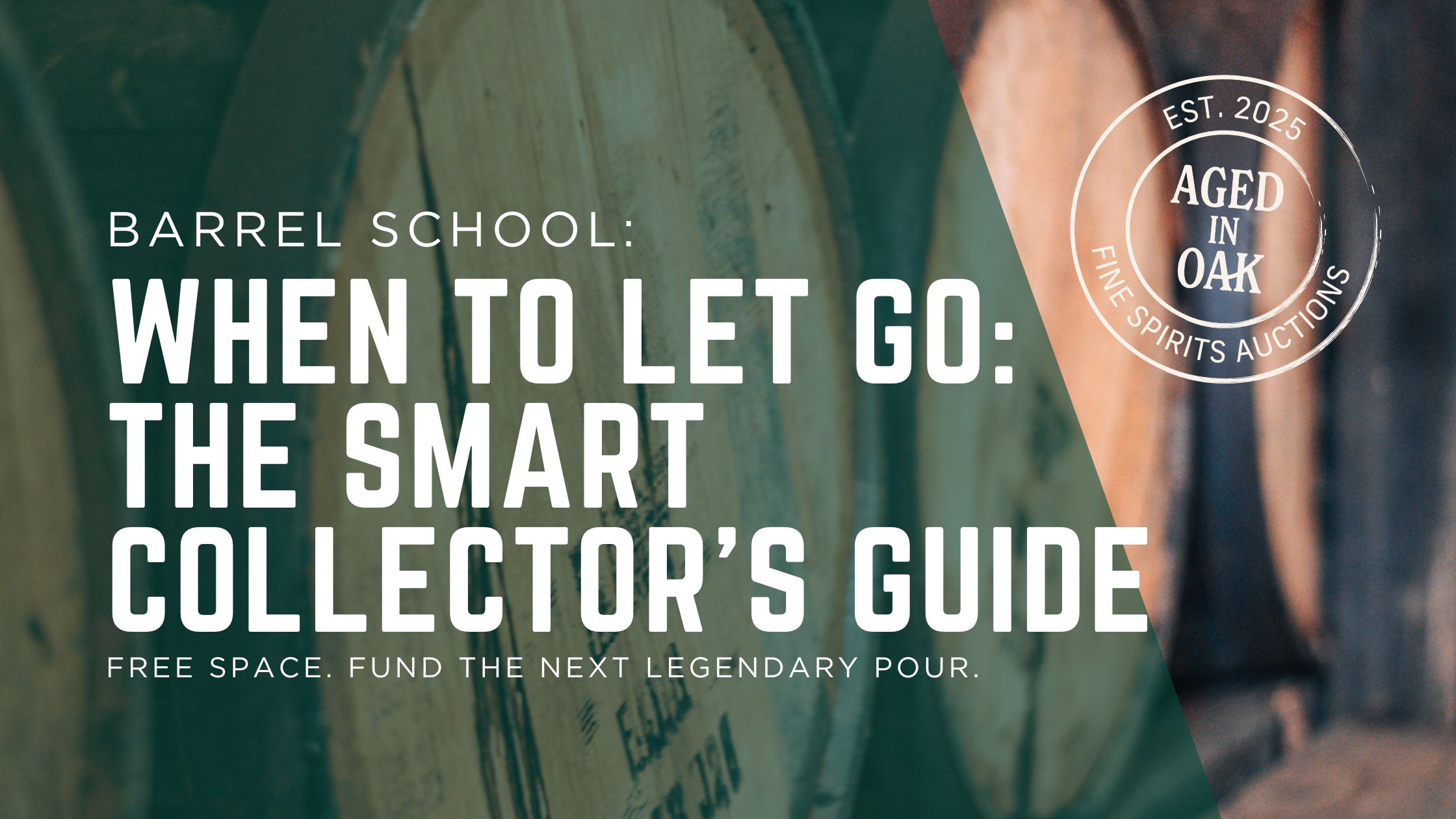
When to Let Go: Knowing It’s Time to Consign Your Bourbon

When to Let Go: Knowing It’s Time to Consign Your Bourbon
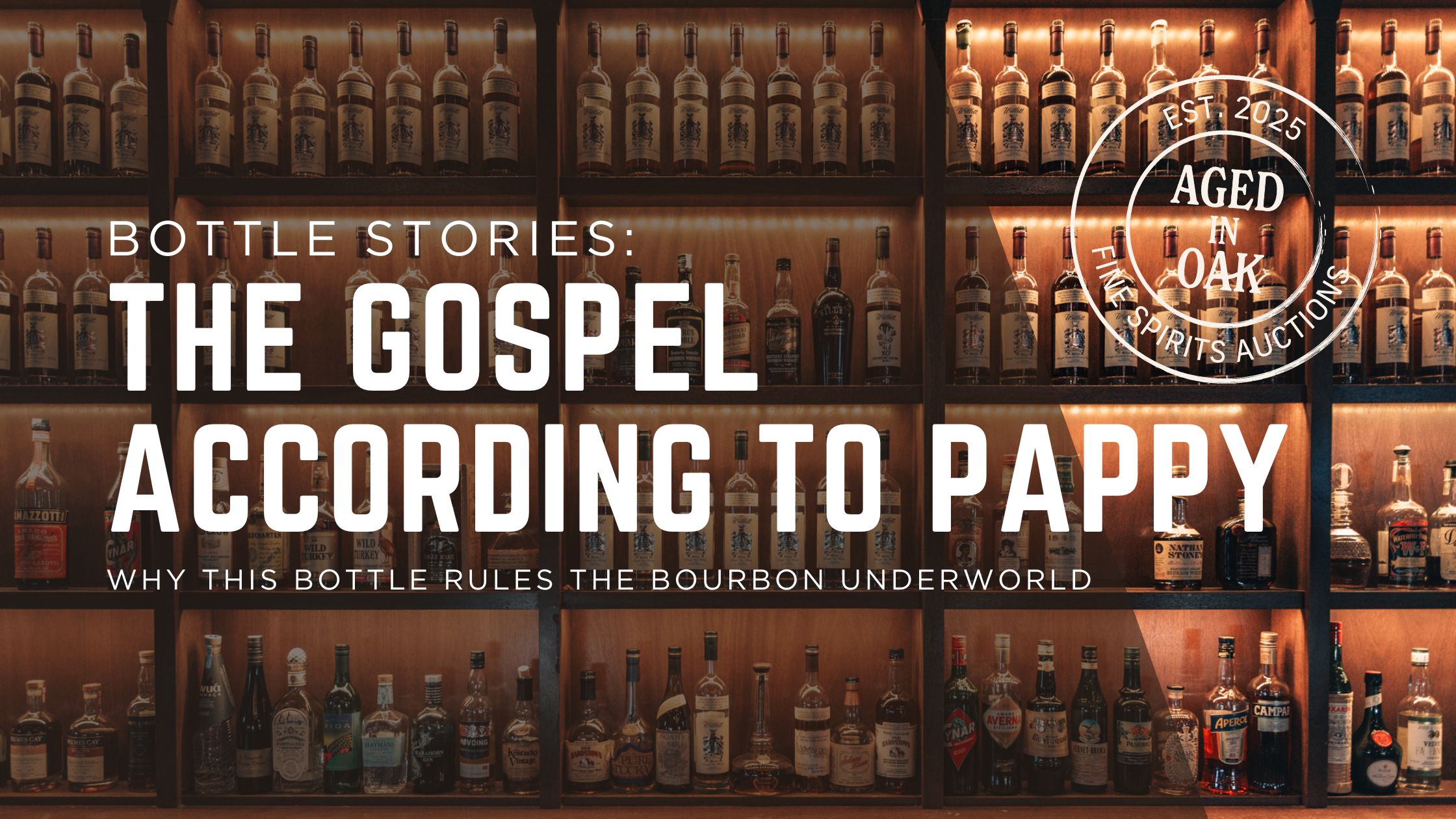
The Gospel According to Pappy: Why This Bottle Rules the Bourbon Underworld

The Gospel According to Pappy: Why This Bottle Rules the Bourbon Underworld

Tapping a Bourbon Barrel with RD1 Distillery

Tapping a Bourbon Barrel with RD1 Distillery

Crafting the "Circa 1856 Old Fashioned" at Chicken Cock

Crafting the "Circa 1856 Old Fashioned" at Chicken Cock

Aged in Oak Debuts Online Bourbon Community May 15, with Auctions and Bottle Appraisals Coming Summer 2025


